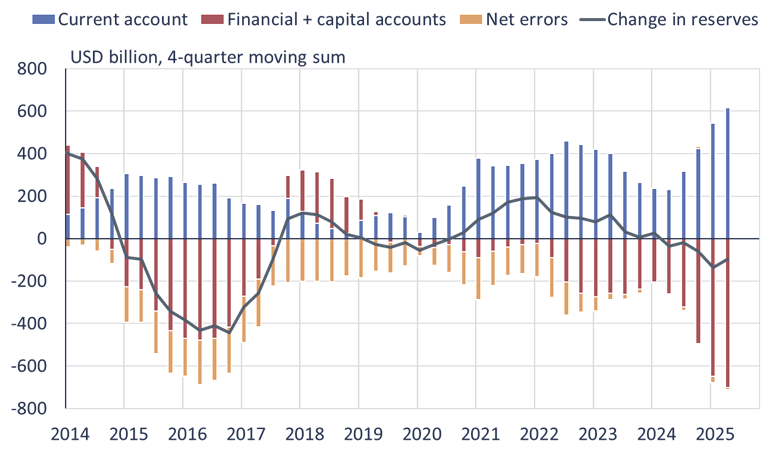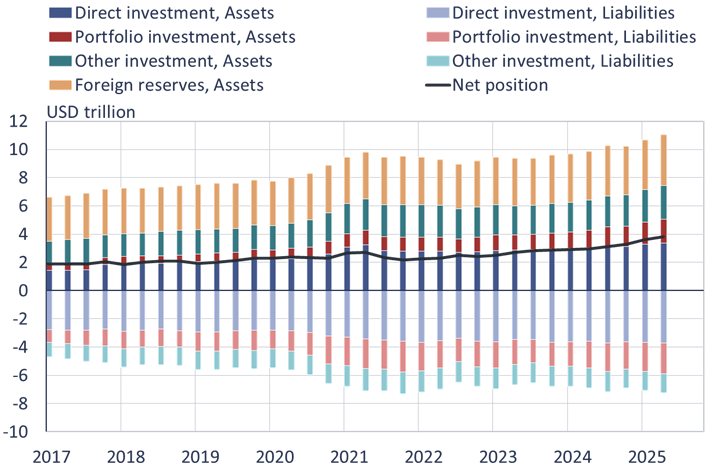BOFIT Weekly Review 42/2025
China’s ballooning current account surplus also drives capital outflows and increases China’s net international investment position
China’s booming foreign trade surplus boosted its current account surplus in the first half of this year. According to balance-of-payments figures released by the People’s Bank of China (PBoC), the current account surplus in January-June amounted to $294 billion. For the four-quarter period ending in June, the current account surplus reached an all-time high of $615 billion (3.2 % of GDP). The goods trade surplus for January-June amounted to $457 billion and the services trade deficit was $106 billion. In addition, the current account includes compensation for factors of production and income transfers, for which the deficit was $56 billion.
The financial account deficit for the first half also rose to $277 billion. The financial account shows more assets flowed out of China ($345 billion) than flowed into China from abroad ($68 billion). Portfolio investment (shares that do not confer management control over the firm, as well as debt securities such as bonds and fund units), accounted for the largest flows on the financial account, with outflows from China amounting to $155 billion in the first half of the year and $37 billion flowing into China from abroad. The net outflow of foreign direct investment (FDI) from China was also outbound. China’s outward FDI ($78 billion) exceeded the inward FDI flow to China ($32 billion).
Both the current account surplus and the financial account deficit have increased steadily over the past year and a half

Sources: SAFE, Macrobond and BOFIT.
China's net international investment position has also increased. As of end-June, China’s gross foreign assets abroad amounted to $11.064 trillion (58 % of GDP), while the amount of gross foreign liabilities (foreign investments in China) amounted to $7.256 trillion (38 % of GDP). Even so, the stocks of FDI and portfolio investment in China were still larger than China’s corresponding investment stocks abroad. China has, however, seen a larger increase in its foreign holdings over the past years than foreign holdings in China have increased. The stock of portfolio investment has grown particularly fast.
China’s foreign reserves, which are managed by the PBoC, account for a third of China’s gross foreign assets. Although the balance-of-payments showed foreign exchange reserves contracting by $41 billion in January-June, the value of China’s total foreign exchange reserves still increased due to valuation changes. The value of China’s foreign reserves in September was $3.689 trillion, its highest level since summer 2015. The value of gold reserves included in foreign reserves climbed to $283 billion (up 48 % y-o-y). The volume of China’s gold reserves, however, only increased slightly from September 2024 (up 2 % y-o-y). Higher interest rates have also lifted the value of reserves, while dollar depreciation has increased the dollar-valuation of non-dollar reserve assets. The value of foreign currency items in the reserves as of end-September amounted to $3.339 trillion. China does not publish a breakdown of the composition of its currency reserves.
In recent years, China’s net international investment position has increased in all major categories

Sources: SAFE, CEIC and BOFIT.